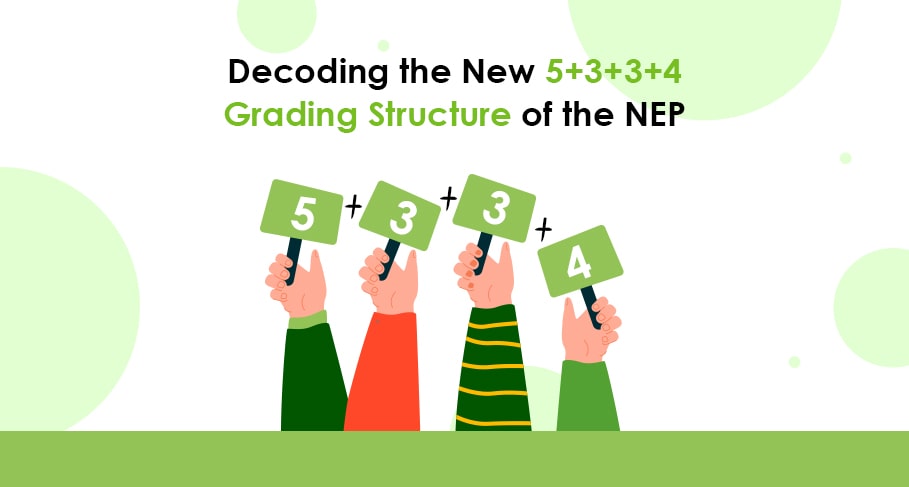The past few years, especially post Pandemic, have seen crucial disruption in the school education segment, with tech-driven learning solutions taking prominence. In line with the same, the NEP 2020 had announced a new grade structure for school students, where they will take exams only for Classes 3, 5, and 8.
Assessment in other years will shift to a regular and formative style that will be more ‘competency-based’ to promote learning and development, testing higher-order skills, such as analysis, critical thinking and conceptual clarity. So, the 5+3+3+4 structure will include a foundational stage from 3 to 8, three years of pre-primary education from 8 to 11, a preparatory stage from 11 to 14, while the secondary stage would comprise 14 to 18 years. This is a huge shift from the traditional annual examination structure, upon which the entire school curriculum was hinged for decades.
But what does this change mean, and how will it impact the learning and assessment of students?
First, with ‘formative assessments’, it would mean that the concept of one decisive ‘final exam’ would be broken down into smaller assessments that will be more focused on actual learning instead of ‘passing’ or ‘topping’ the class. In other words, assessments ‘of’ learning will play no part in the actual learning process. They will become a lot more significant instead of just testing how well a student has been able to memorize the subject! This also means that assessments will become more focused on ‘for’ learning and provide teachers with enough information to course correct frequently and adapt their teaching to what the students really need.
However, for formative assessments to add value to the learning process, they will have to be more data-driven and feedback oriented to help teachers gain insights into learning progress and challenges, if any, for individual students.
Benefits of formative assessments that are tech-driven include:
- Better classroom engagement: Smaller formative assessments, which can be broken down to include as small a section of the syllabus as a single lesson, can help enhance student engagement and drive participation. Further, leveraging digital assessment systems with multiple-choice answers promotes a better in-classroom learning experience.
- Instant feedback: Digital assessments offer instant results after an evaluation, making it easier for teachers to share feedback with students. Also, by leveraging the data-driven insights generated for each student, teachers can evaluate and address individual learning challenges more effectively.
- Promotes independent learning: Digital assessments offer the flexibility for both in-classroom engagement and self-study at home. A student can choose to work on subjects or lessons they have previously found difficult by leveraging the instant, data-driven feedback provided by the digital assessment solution. This enables and empowers students to identify and correct their mistakes and learn from them, thereby promoting independent learning processes.
- Can help assess teacher performance: With digital assessments, while teachers can gain insights into individual student performance, schools can also leverage the data to monitor teacher performance. Details like improving students’ scores over a period of time, the average class performance, the frequency of assessments, how the teacher is leveraging the post-assessment insights to help students and the overall classroom engagement can all be tracked through digital assessment solutions.
- Drive innovation of effective teaching techniques: With timely and detailed feedback on assessments, teachers can enhance classroom engagement and create innovative learning techniques. Digital assessments help map every student’s learning graph and thus make it easier for teachers to identify and innovate teaching methodologies to benefit students.
Apart from the above, digital assessment solutions that focus on ‘for’ learning will change the narrative around the examination, making it an integral tool for fun and engaging learning – a far cry from the current stressful and anxious state of examination. This will also bring about a paradigm shift from examination results reflecting how ‘good’ or ‘bad’ a student is to become a tool that helps identify where a student needs help or extra support. Together with the supportive digital learning guidelines of the NEP 2020, the change in assessment structure is a shift that has been long due and will pave the path for making education once again focussed on helping students learn and not just compete for grades.


